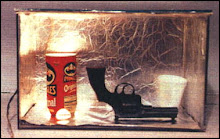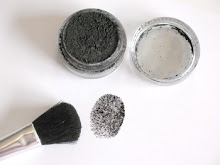Gordon Allport (1930): Had 3 assumptions on handwriting: 1. personality is consistent; 2. movement is expressive of personality; and 3. the gestures and other expressive movements of an individual are consistent with one another.
Tuesday, January 27, 2009
History of Handwriting
Gordon Allport (1930): Had 3 assumptions on handwriting: 1. personality is consistent; 2. movement is expressive of personality; and 3. the gestures and other expressive movements of an individual are consistent with one another.
Sunday, January 25, 2009
Techniques or Indicators Scientists Use to Identify Handwriting or Forgeries
1. Line quality: Do the letters flow or are they written with very intent strokes?
2. Spacing of words and letters: What is the average space between words and letters?
3. Ratio of height, width, and size of letters: Are the letters consistent in height, width, and size?
4. Lifting pen: Does the author lift his or her pen to stop writing a word and start a new word?
5. Connecting strokes: How are the capital letters connected to lower-case letters?
6. Strokes to begin and end: Where does the letter begin and end on a page?
7. Unusual letter formation: Are there any letters written with unusual slants or angles? Are some letters printed rather than written in cursive?
8. Pen pressure: How much pen pressure is applied on upward and downward strokes?
9. Slant: Do letters slant to the left or right? If slant is pronounced, a protractor may be used to determine the degree.
10. Baseline habits: Does the author write on the line or does the writing go above or below the line?
11. Fancy writing habits: Are there any unusual curls or loops or unique styles?
12. Placement of diacritics: How does the author cross the t’s or dot the i’s?
Tuesday, January 20, 2009
In-Class Handwriting Forgery Practice

Then we had another person freehand draw it.

Then finally someone traced it.

After that activity, we moved onto another. Mr. Kelly had us write our own fake checks with the name, "Joseph John Doe." Then we tore them up to pieces and put them into envelopes. Mr. Kelly then came around and picked them up. He then gave us a different envelope. We had to put the check back together and find out whose check it belonged to using the 12 techniques of handwriting that we had learned earlier.

Monday, January 19, 2009
Citations for Handwriting
http://hubpages.com/hub/6-Common-Concerns-About-Handwriting-Analysis-The-Truth-Revealed
http://



